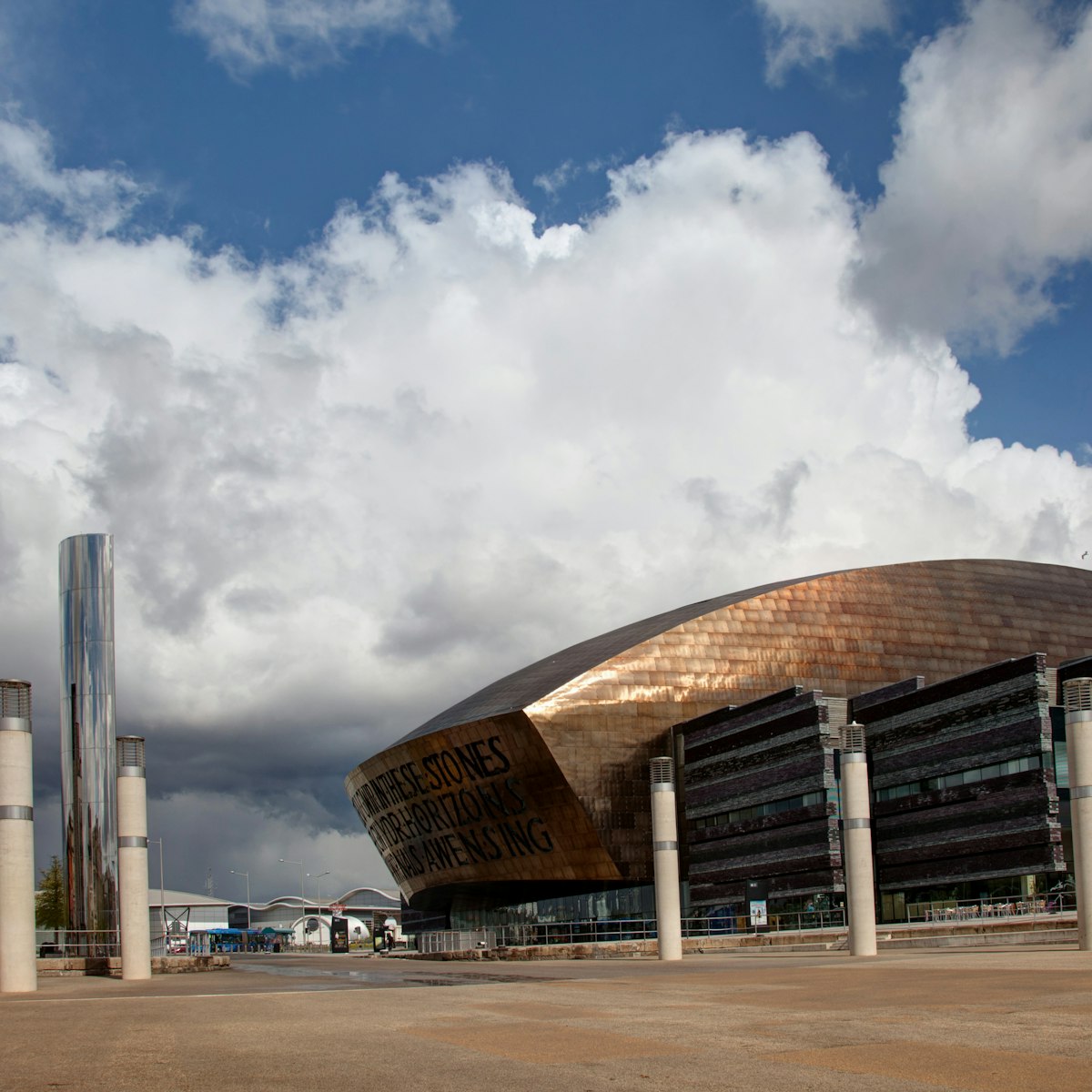Devoted mainly to natural history and art, this grand neoclassical building is the centrepiece of the seven institutions dotted around the country that together form the Welsh National Museum. It's one of Britain's best museums; you'll need at least three hours to do it justice, but it could easily consume the best part of a rainy day. On-site parking, behind the museum, is £6.50.
The Evolution of Wales exhibit whizzes onlookers through 4600 million years of geological history, its rollicking multimedia display placing Wales into a global context. Films of volcanic eruptions and aerial footage of the Welsh landscape explain how its scenery was formed, while model dinosaurs and woolly mammoths help keep the kids interested.
The natural-history displays range from brightly coloured insects to the 9m-long skeleton of a humpback whale that washed up near Aberthaw in 1982. The world's largest turtle (2.88m by 2.74m), a leatherback that was found on Harlech beach, is also here, suspended on wires from the ceiling.
Boasting one of the world's most significant impressionist collections, the gallery exhibits such treasures as a trio of Monet's Water Lilies, alongside his scenes of London, Rouen and Venice; Sisley's The Cliff at Penarth (the artist was married in Cardiff); Renoir's shimmering La Parisienne; a cast of Rodin's The Kiss; and Van Gogh's anguished Rain: Auvers. Welsh artists, such as Gwen and Augustus John, Richard Wilson, Thomas Jones, David Jones and Ceri Richards, are well represented, along with famous names from across the border, such as Francis Bacon, David Hockney and Rachel Whiteread.
Many of the impressionist and post-impressionist pieces were bequeathed to the museum in 1952 and 1963 by the Davies sisters, Gwendoline and Margaret, granddaughters of 19th-century coal and shipping magnate David Davies. One room is devoted to their collection of seven paintings by British master JMW Turner, which were dismissed as fakes in the 1950s but have recently been reappraised as genuine.
One of the large upstairs galleries is devoted to Welsh ceramics, while others are set aside for temporary exhibitions on subjects as wide ranging as 'Women in Photography' and 'Japanese Design'.







